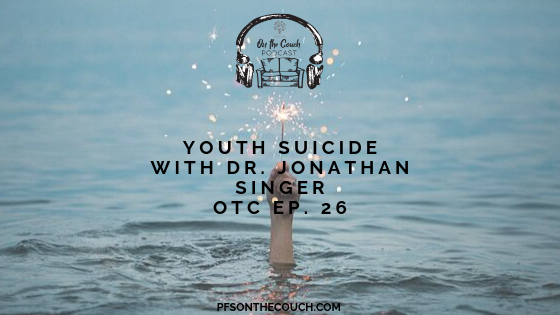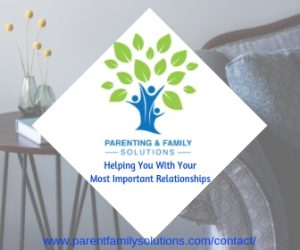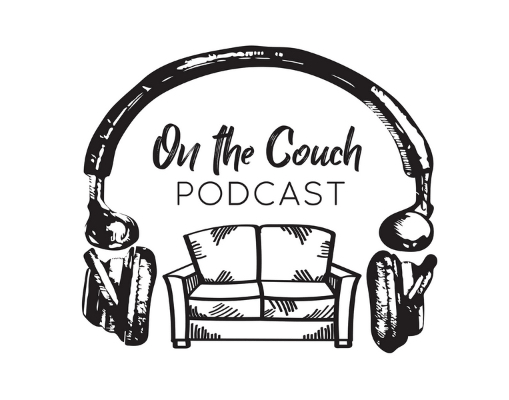OTC Ep. 26 – Youth Suicide With Dr. Jonathan Singer

Subscribe: Apple l Google l Stitcher l Spotify l TuneIn
In This Episode
Preventing teen suicide is an issue that every parent needs to know about. In 2017 (the most recent year that statistics are available), youth suicide was the highest it’s been since 1981. In this helpful and informative episode, John talks with expert Dr. Jonathan Singer about risk factors for teen suicide, important ways to reduce your teen’s suicide risk, myths about suicide, and help for parents and families struggling with this issue.
Podcast Sponsor

Parenting & Family Solutions is a private outpatient mental health practice in the Harrisburg & Lancaster, PA area that is focused on providing quality mental health services to meet your needs. Our licensed and board certified counselors are experienced and able to help you improve your life and most important relationships. Call us to schedule your first session at 717-602-5560
Meet Dr. Jonathan Singer

Dr. Jonathan Singer is the President of the American Association of Suicidology, Associate Professor of Social Work at Loyola University in Chicago, as well as the co-author of the book Suicide in Schools: A Practitioners Guide to Multi-Level Prevention, Assessment, Intervention, and Post-vention. His clinical research interests include a focus on family based interventions for suicidal and cyber bullied youth. He’s also the host of the Social Work Podcast, available at www.socialworkpodcast.com
Highlights
September is National Suicide Prevention month, but we need to spread awareness of this important issue year round. If you or a loved one is struggling with thoughts of suicide, there are some people who can help:
- National Suicide Prevention Lifeline: 1-800-273-8255
- Text HOME to 741-741
- Visit suicidepreventionlifeline.org for a live chat
- Visit your local Emergency Room
Stats
The most recent statistics on suicide are from 2017. These are provided by CDC and the American Association of Suicidology at www.suicidology.org
In 2017, suicide was the 10th leading cause of death in the USA and the 2nd leading cause of death ages 15-34.
Fatal Suicide:
- Total deaths from suicide: 47,173 which equals 1 person every 11 minutes
- 77.97% males
- 22.03% females
- 1.11% ages 5-14
- 13.25% ages 15-24
- 32.4% ages 25-44
- 35.07% ages 45-64
- 18.16% ages 65+
Non-fatal suicide attempts:
- 1.2 million attempts in 2017 or 1 every 27 seconds
- There were 25 attempts for every one death by suicide
Language is important.
- We no longer say “successful” vs “failed” suicide attempt because these terms are problematic and are not helpful—ie: associate living with “failing” and dying with “success.” Instead, use the terms “fatal” vs “non-fatal.”
- We also don’t recommend saying that someone “committed” suicide—the term “committed” usually has negative connotations ie: committed a crime. Instead, refer to the fact that the person “died by suicide,” which places the emphasis on the death, not on the act.
Rates of death vary widely
- May be higher in certain communities
- Can vary by ethnic, identity, sexual orientation, geographic region
Risk Factors for Teens
- The biggest risk factor is a sense of being disconnected from an important social group
By far, the most important social group is the family/parents
- The family needs to be a safe place that is loving, supportive, and not abusive or overly harsh. Kids need to know that their parents hear them and are paying attention to them.
- In adolescence, kids need independence but still need emotional support in social issues ie: peer groups, loneliness, and social isolation.
- Parents sometimes have the misconception that it is normal for adolescents to disconnect from them and connect to peer groups exclusively; however, that is not true. Adolescents need both.
- Strong family connections are extremely protective in decreasing suicide risk
- Things that are a big deal to kids are often not a big deal to adults. Don’t be dismissive of what’s important to them or what is distressing. It’s better to validate the child’s experience rather than judging and dismissing.
The second most important social group is the school/peer group
- Social isolation is increased if the child is being bullied or ostracized by their peer group. However, this alone is unlikely to lead to suicide.
- When combined with mental illness, social isolation can lead to an increased risk for suicide ie: depression, anxiety, eating disorders, ADHD, ODD, etc.
- Sometimes the mental health concerns can lead to social isolation ie: ADHD causing impulsive behaviors, which leads to other kids keeping their distance. This is why parents are urged to have their kids checked out and addressed as early as possible if you have concerns about your child’s mental health. Getting help early will improve social functioning, academic functioning, and a sense of self esteem and well being, leading to decreased suicide risk.
- Substance abuse is another risk factor. When kids make more lethal attempts, usually substances are involved.
- Technology may or may not impact risk factors for suicide—depending on why and how they are using technology. Maybe they are finding support online; maybe they are getting cyber-bullied. Paying attention to your kids online usage is helpful, and it is especially important to start early.
Ways to Reduce Suicide Risk
- Pay attention to your kids and foster a healthy relationship/connection with them
- Build community with other families who have shared values and shared rules about what’s appropriate.
- Talk to your kids about suicide. Studies show that asking the questions actually decreases their distress and seems to reduce risk.
Myths about Youth Suicide
- Technology causes suicide—in some cases, it may increase risk (cyber bullying, etc), but in some cases it may decrease risk (online support from friends and support groups)
- They just want attention
- There’s a difference between wanting to die and just wanting to be happy. Sometimes kids will say they want to kill themselves, but what they are really trying to communicate is that they are unhappy, angry, lonely, etc. Either way, their needs need to be addressed.
- If I talk about suicide with my teen, it just puts the idea more in their head
- Talking about suicide normalizes the emotional struggles or life struggle and gives voice to that
- Asking about suicidal thoughts actually decreases distress
- Thinking about the concept of suicide doesn’t increase the risk of them killing themselves. Thinking about the concept of suicide is not the same thing as being suicidal
Additional Resources:
Trainings for Parents can be found at the Suicide Prevention Resource Center at SPRC.org
- Mental Health First Aid
- QPR—Question, Persuade, and Refer (free online training)
NAMI—National Alliance for Mental Illness: good if child is already in treatment; support for family members
What to expect when you go to the ER:
- You will be seen by trained professionals who will conduct a Risk Assessment. They will recommend what form of treatment (if any) is needed. This can vary depending on the issue, home environment/level of support at home, severity of the suicidal thoughts/plans, whether they can be safe at home or if they need to be in the hospital to stay safe. They may refer you to outpatient individual or family counseling, or they may recommend that your child see a psychiatrist for evaluation.
Wrap Up: What do parents need to know about teen suicide?
- Parents are the most important people in a child’s life
- Not only is there nothing wrong with asking kids about suicide, it’s actually the best thing you can do if you suspect they may be having suicidal thoughts.
- Start out by asking, “Have you been feeling sad or hopeless lately?
- (If yes, ask about suicide)
- For example “Have you ever thought maybe this world isn’t for me?” Or to put it another way—”Sometimes when things like this happen, people have thoughts of killing themselves. Has this ever happened to you?” or “Have you ever wondered if maybe you’d be better off dead?” or “Have you ever thought about ending your life?”
- If the answer is yes, ask them “Have you ever thought about ways to kill yourself?”
- Remember, having the conversation can help alleviate their distress
- Help is out there: Attachment based family therapy, Cognitive Behavioral Therapy, and Dialectical Behavioral Therapy are all mental health treatments that have been shown to reduce suicide ideation and suicide attempts.
- Parents are not alone; get support if you need it from other parents in your community (online or in person) or from a mental health professional.
Next Episode
OTC Ep. 27 – Healing With The Help of Service Dogs
Previous Episode – OTC Ep. 25 – IEPs, 504s and Risk Assessments With Kristi Peterson
Meet John Dennis

John is a licensed professional counselor with over 14 years of experience who specializes in counseling for individuals, couples, children, and adolescents. He focuses on working with anxious teens and adults, couples who are struggling to connect with one another, and those dealing with grief and loss.
